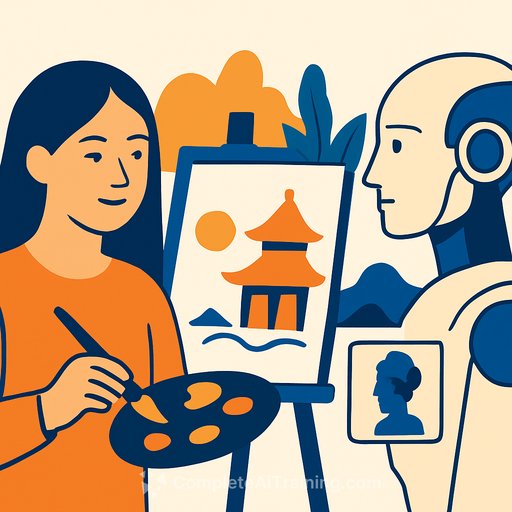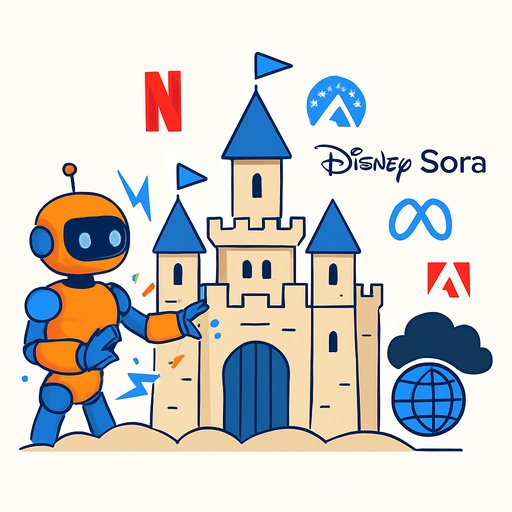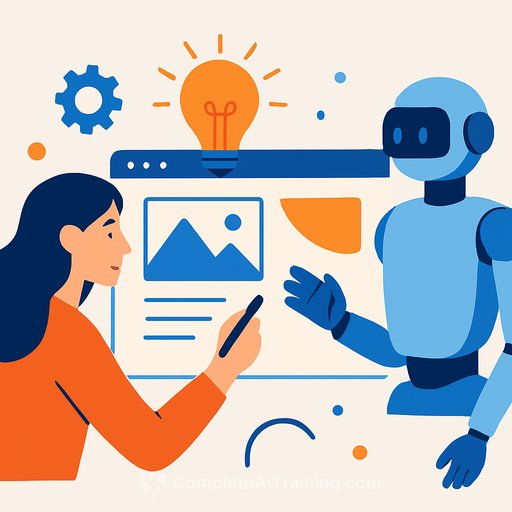Cultural Heritage in the Digital Age: How Asian Creatives Use AI to Preserve Traditions
Across Asia, artists like Takashi Murakami and Victor Wong are applying AI and digital tools to restore, reinterpret, and share centuries-old art forms—from Edo-era folding screens to Chinese ink paintings. Their work proves that technology can play a meaningful role in preserving and evolving cultural heritage for global audiences.
Murakami’s restoration of a 17th-century Japanese folding screen combined AI-driven reconstruction with human craftsmanship, blending traditional techniques and contemporary motifs. This approach shows the balance between authenticity, artistic authorship, and innovation in preserving heritage.
Other artists, such as Almagul Menlibayeva and Rehmatullah Mirbahar, use AI to reclaim and visualize underrepresented cultural histories—from Central Asian nomadic rituals to the ancient Indus Valley civilization. Their immersive digital art challenges historical erasure and invites global engagement with endangered narratives.
Ming Shiu’s creation of Genesis Kai, an AI-powered digital alter ego rooted in Korean heritage, pushes boundaries by positioning AI as a creative and cultural collaborator. These projects collectively highlight a trend where Asian creators treat technology as a partner in safeguarding and reimagining tradition for future generations.
Takashi Murakami: Reviving Edo Art with AI
Takashi Murakami’s exhibition, Japanese Art History à la Takashi Murakami, centered on restoring a 17th-century Japanese folding screen considered a national treasure. The process began with a high-resolution scan from the Tokyo National Museum. About 20% of the artwork was damaged or missing. AI-generated lines helped recreate these areas, but human input was essential—nine studio assistants redrew lost elements by hand where AI couldn’t deliver.
Murakami added his signature anime-style “Smiling Flowers” and bright color flourishes, mixing classical Edo imagery with contemporary designs. His method, sometimes called "Murakamising," fused traditional craftsmanship like gold leaf application with AI’s ability to suggest large-scale reconstructions. This duality raises questions about authenticity while demonstrating how AI can assist in cultural preservation.
Victor Wong: AI and Ink Painting
In Hong Kong, Victor Wong developed an AI robot named A.I. Gemini to transform traditional Chinese ink painting. The robot mimics centuries-old brush strokes and techniques, managing the physical behavior of ink and water on rice paper. Wong spent three years training Gemini to create original “mindscape” paintings inspired by Shan Shui landscapes.
Each piece takes eight to ten hours, and due to the robot’s unpredictable algorithms, no two works are identical. Wong’s background in physics, engineering, and digital effects helped him build a system that respects traditional aesthetics while embracing innovation. Exhibited internationally and commissioned by major brands, Gemini challenges traditional ideas of authorship and points toward new futures for Asian ink art.
Almagul Menlibayeva: Cyber-Nomadic Textiles
Kazakh artist Almagul Menlibayeva uses AI to reclaim and transform historical and cultural narratives. Her installation Map of Nomadizing Reimaginings #3 pairs a handwoven textile map of Central Asia with AI-enhanced video scenes focused on feminist rituals, nomadic storytelling, and endangered languages.
Menlibayeva treats AI not as a neutral tool but as a medium loaded with ideological and historical implications. She feeds archival footage, oral histories, and family embroidery through AI platforms to create immersive, nonlinear artworks. These pieces confront Soviet-era cultural erasure and offer a “decolonial” digital alternative that revives silenced heritage.
Rehmatullah Mirbahar: Mohenjo Daro Reimagined
Pakistani digital artist Rehmatullah Mirbahar gained attention for using AI to visualize Mohenjo Daro, a key Indus Valley civilization city from 2500 BCE. After months of detailed research into architecture, attire, and lifestyle, combined with onsite photography of ruins, Mirbahar used AI to generate images depicting markets, streets, and citizens.
Since AI produced only about 50-60% accurate results, Mirbahar continuously refined the images by hand. His work not only visualizes but educates, sparking global interest in an ancient civilization often overlooked. He plans to digitally resurrect other South Asian heritage sites, demonstrating AI’s role in making history accessible and engaging.
Ming Shiu: Genesis Kai and Korean Heritage
Ming Shiu introduced Genesis Kai, a virtual AI alter ego, as a creative partner and cultural custodian. Drawing on Korean cultural and linguistic data, Kai produced the debut series The Red Prayer, evoking Joseon-era ceramics and symbolic water motifs.
Presented as a “Nova Sapien,” Genesis Kai exemplifies a symbiotic relationship where AI learns from human tradition and guides creative reinterpretation. Shiu’s project shows AI as an evolving collaborator rather than a replacement, expanding how Korean heritage can be digitally expressed and shared worldwide.
Partnering with AI to Preserve and Reimagine Tradition
These Asian artists go beyond surface-level AI use. They demonstrate how technology can work alongside human expertise to deepen cultural narratives, restore endangered traditions, and reimagine heritage with respect for complexity and context.
AI is treated as a collaborator, not a substitute, with artists carefully balancing authentic preservation and inventive evolution. This thoughtful approach ensures cultural legacies remain vibrant and relevant in a digital world.
Your membership also unlocks:






